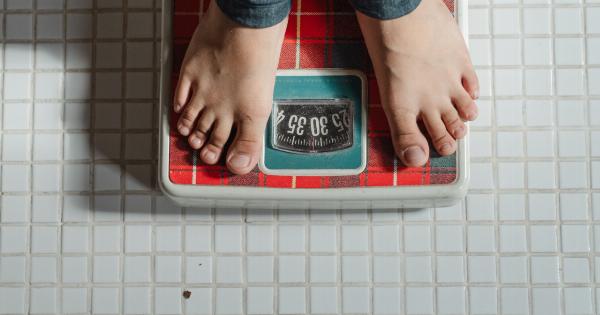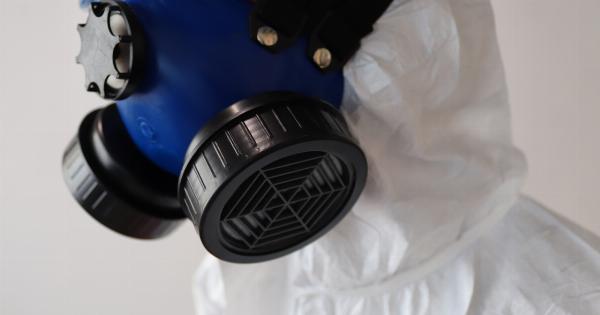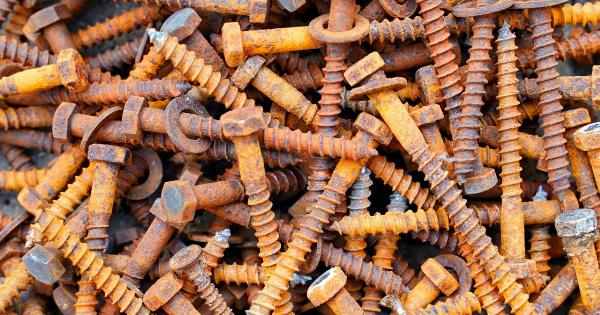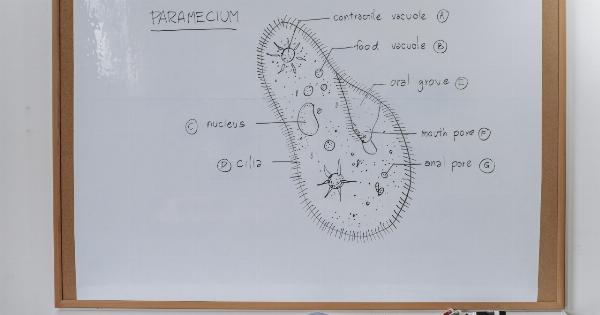Uric acid is a waste product that is produced when the body breaks down purines, which are substances found in foods and beverages such as liver, anchovies, mackerel, dried beans, and beer.
Normally, uric acid dissolves in the blood and is excreted from the body through urine. However, if the body produces too much uric acid or if the kidneys are not able to eliminate it properly, high levels of uric acid can accumulate in the body, leading to various health problems.
Causes of High Uric Acid Levels
There are several factors that can contribute to high levels of uric acid in the body:.
1. Diet: Consuming foods that are high in purines can increase the production of uric acid in the body. Red meat, organ meats, shellfish, and certain types of fish are known to be particularly high in purines.
2. Genetics: Some people may have a genetic predisposition to produce more uric acid or have kidneys that are less efficient at eliminating it.
3. Obesity: Being overweight or obese can increase the risk of high uric acid levels, as excess weight can lead to higher production of uric acid and decreased excretion.
4. Certain Medical Conditions: Certain medical conditions such as hypertension, diabetes, kidney disease, and hypothyroidism can increase the risk of high uric acid levels.
5. Medications: Certain medications such as diuretics, aspirin, and some immunosuppressive drugs can interfere with the body’s ability to excrete uric acid, leading to higher levels in the bloodstream.
Signs and Symptoms of High Uric Acid Levels
High levels of uric acid in the body may not always cause noticeable symptoms, and some individuals may remain asymptomatic.
However, when symptoms do occur, they are often associated with a condition known as hyperuricemia, which is the medical term for high uric acid levels. Common signs and symptoms include:.
1. Joint Pain: High uric acid levels can lead to a condition called gout, which is characterized by sudden and severe joint pain. Gout typically affects the big toe, but it can also affect other joints such as the ankle, knee, wrist, and fingers.
The pain is usually accompanied by swelling, redness, and tenderness in the affected joint.
2. Kidney Stones: Elevated uric acid levels can contribute to the formation of kidney stones. These are hard deposits of minerals and salts that form in the kidneys and can cause intense pain in the lower back or abdomen.
Other symptoms of kidney stones may include blood in the urine, frequent urination, and a persistent urge to urinate.
3. Fatigue: High uric acid levels can also cause unexplained fatigue and lethargy. This can be due to the body’s increased effort to eliminate uric acid and the associated inflammation in the joints.
4.
Skin Conditions: Some individuals with high uric acid levels may develop skin conditions such as tophi, which are lumps that form under the skin around joints or pressure points, and urate crystal deposits, which appear as chalky white deposits under the skin.
Diagnosis of High Uric Acid Levels
If you suspect that you may have high uric acid levels, it is important to seek medical attention for proper diagnosis. A healthcare professional will typically perform a blood test to measure the levels of uric acid in your bloodstream.
The normal range of uric acid levels may vary slightly between laboratories, but generally, levels above 6.8 mg/dL in males and 6.0 mg/dL in females are considered high.
However, it is essential to interpret these levels in the context of individual symptoms and medical history.
Risks and Complications of High Uric Acid Levels
High uric acid levels can lead to various risks and complications:.
1. Gout: As mentioned earlier, elevated uric acid levels can increase the risk of developing gout. Gout attacks can cause severe joint pain and inflammation, and if left untreated, they can lead to joint damage and deformity.
2. Kidney Stones: High uric acid levels can contribute to the formation of kidney stones, which can cause pain and discomfort. In severe cases, kidney stones may require medical intervention for removal.
3. Kidney Disease: Prolonged high uric acid levels can also damage the kidneys and contribute to the development of chronic kidney disease. This can impair the kidneys’ ability to filter waste products from the blood effectively.
4. Cardiovascular Disease: Some studies have suggested a link between elevated uric acid levels and an increased risk of cardiovascular disease, including hypertension, heart attack, and stroke.
However, more research is needed to establish a definitive causal relationship.
Managing High Uric Acid Levels
If you have been diagnosed with high uric acid levels or are at risk of developing them, here are some strategies to help manage and reduce the levels:.
1. Diet Modifications: Limiting the intake of purine-rich foods such as red meat, organ meats, shellfish, and certain types of fish can help reduce uric acid levels.
It is also important to stay hydrated by drinking plenty of water, as it helps in flushing out excess uric acid.
2. Weight Management: Maintaining a healthy weight can help decrease uric acid levels. If you are overweight or obese, losing weight gradually through a balanced diet and regular exercise can be beneficial.
3. Medications: In some cases, medications may be prescribed to help lower uric acid levels. These medications may help reduce the production of uric acid or increase its elimination from the body.
4. Avoid Alcohol: Alcohol consumption, especially beer, has been associated with higher uric acid levels. Limiting or avoiding alcohol altogether can help prevent spikes in uric acid.
5. Stay Active: Regular physical activity can help prevent uric acid buildup. Engage in exercises that are gentle on the joints, such as swimming or cycling.
When to Seek Medical Attention
If you experience severe joint pain, swelling and inflammation, or suspect that you have kidney stones, it is important to seek immediate medical attention.
Additionally, ongoing symptoms such as unexplained fatigue, persistent joint pain, or skin conditions should be evaluated by a healthcare professional.
Preventing High Uric Acid Levels
While not all cases of high uric acid levels can be prevented, the following lifestyle modifications may help reduce the risk:.
1. Balanced Diet: Adopt a balanced diet that is low in purine-rich foods. Include a variety of fruits, vegetables, whole grains, and lean proteins in your meals. Avoid excessive consumption of high-purine foods.
2. Hydration: Drink an adequate amount of water throughout the day to promote the excretion of uric acid.
3. Limit Alcohol: If you choose to consume alcohol, do so in moderation and limit or avoid beer, as it is known to increase uric acid levels.
4. Regular Exercise: Engage in regular physical activity to maintain a healthy weight and promote overall wellness.
5. Medical Check-ups: Regular medical check-ups and screenings can help identify any underlying medical conditions that can contribute to high uric acid levels.
Conclusion
High uric acid levels can have significant impacts on the body, leading to conditions such as gout, kidney stones, and kidney disease.
Recognizing the signs and symptoms of high uric acid levels is crucial in promoting early diagnosis and appropriate management.
By making lifestyle modifications, seeking medical attention when necessary and following healthcare professional’s recommendations, individuals can effectively manage and reduce their uric acid levels, thereby minimizing associated risks and complications.






























